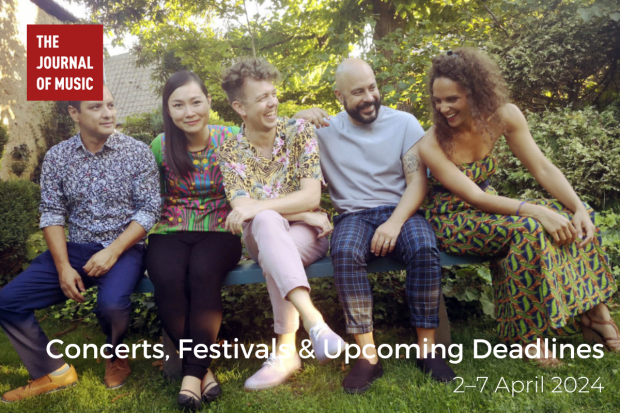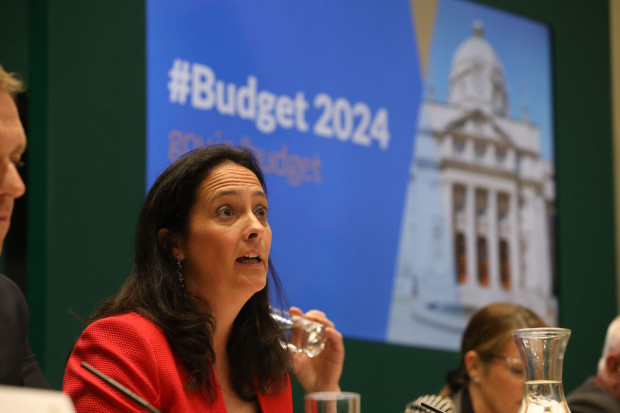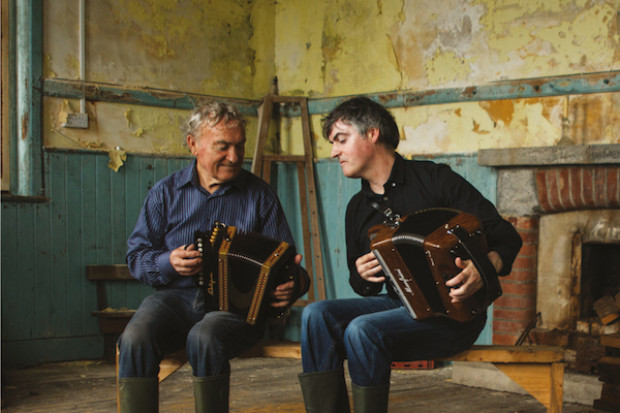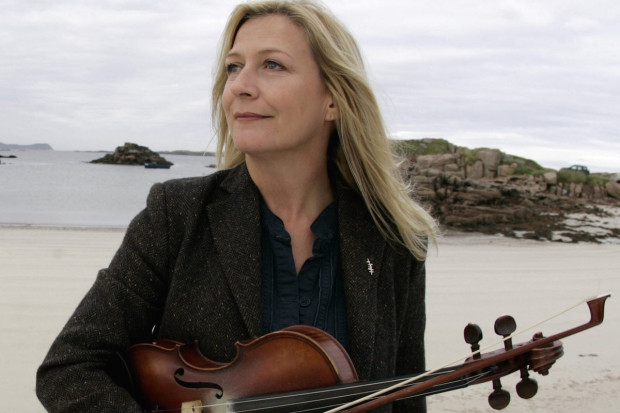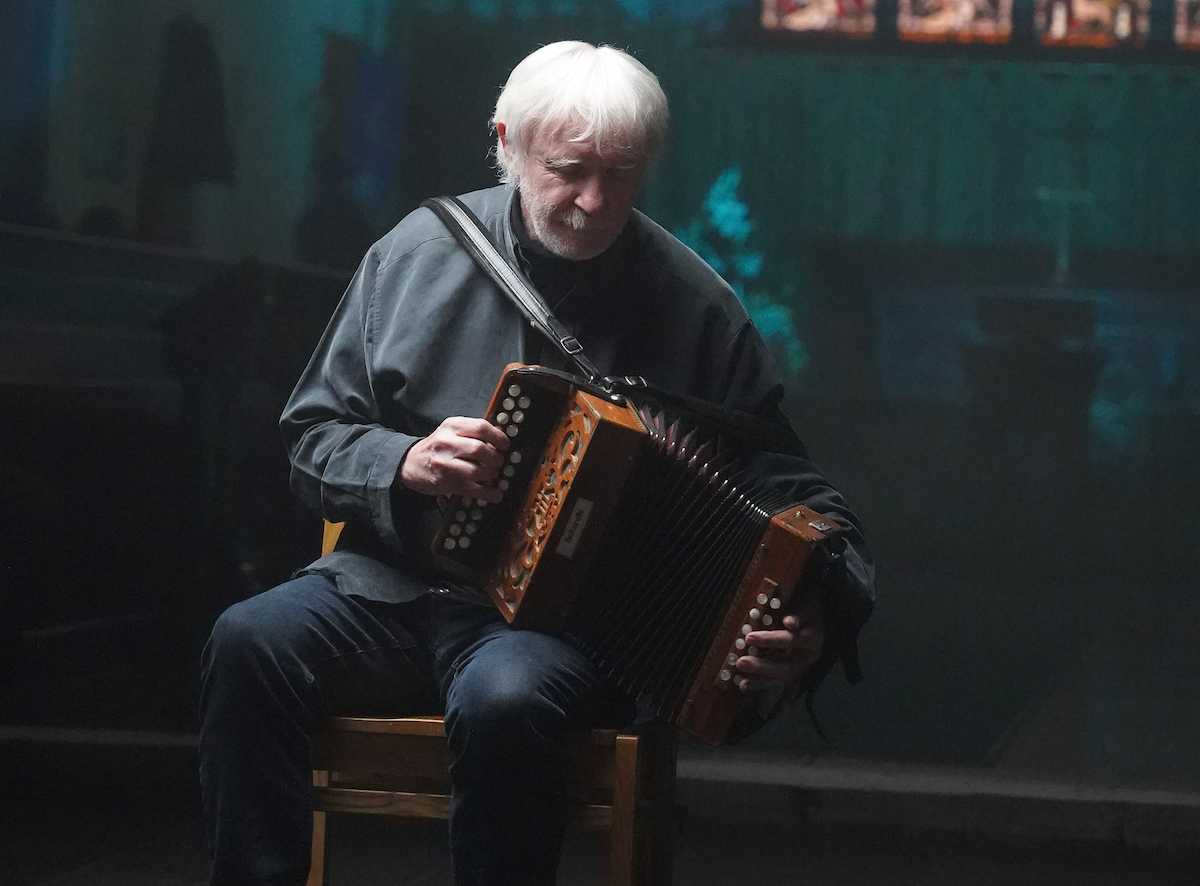
Máirtín O’Connor (Photo: TG4)
Airs for an Ocean Under Duress
The planned performance of The Mighty Ocean, a new work by Galway composer-accordionist Máirtín O’Connor that was commissioned as part of the Galway 2020 Capital of Culture Programme, was scuppered last year by the pandemic. In its place, a reframed film of the piece premiered recently on TG4 (25 April), shot in St Nicholas’ Collegiate Church in Galway, and intercut with visuals of the ocean, Galway, and some brief interviews.
Indeed, the opening of the film serves as an introductory programme note, as O’Connor reflects on his own personal relationship with the sea, as well as musing on its imperilment by human misuse. Scored for twelve musicians, including O’Connor’s daughters Sinéad and Ciara O’Connor on fiddle and cello, it brings together many of O’Connor’s regular co-conspirators over the past decades: foremost among these are the ConTempo Quartet, fiddler Cathal Hayden, the guitarist Seamie O’Dowd, percussionist Jim Higgins, and multi-instrumentalist and arranger Garry Ó Briain. In doing so, it is a continuation of O’Connor’s ongoing musical dialogues with classical music and other genres.
While a film version cannot capture the spontaneity of a live performance, it does provide more insight into the collaborative nature of the composition. Alongside ConTempo, the other main collaborator and facilitator is Garry Ó Briain, who explains how O’Connor writes the melodies and tunes and he then transcribes and helps arrange and structure them, composing individual parts for the other musicians. Ó Briain also adverts to the desirability of creating textures where the ensemble isn’t limited to accompanying the soloist, but instead contributes more significant musical material. This is a timely goal, as too often ‘trad-plus-orchestra’ concoctions treat the orchestra as an extravagant (and dispensable) extension. And yet O’Connor is the central figure here, despite an unusual seating configuration that places him in the centre, encircled by the other musicians.
The piece itself is a multi-movement programmatic piece with descriptive titles. It begins with a waltz, ‘And the Earth Still Turns’, which is highly characteristic of O’Connor’s style in its nods to both French and Eastern-European folk music. Here flowing, lyrical melodies contrast with eruptive triplet sections and lurching syncopated figures; there is also a strong sense of dialogue between the accordion and the other musicians.
The bridging passage into ‘Conference Air’ is one of several that feature visuals of the ocean, and ends by blurring the sound of the sea with the airy wheeze of the accordion bellows. The air’s opening chords underline how O’Connor has long been a master at bringing the most out of the button accordion’s limited potential for chords and harmonisation. He is also a great exponent of slow airs, and has created a tune here that befits his subject. When the melody soars to the upper notes of the accordion, O’Connor allows the notes of the tune to meld together, a technique more familiarly heard in contemporary accordion music.
Two irrepressible jigs follow (‘The Angry Ocean’ and ‘Our Best Intentions’), using the whole range of the accordion. The classical ensemble takes more of a back seat as the focus switches to a traditional sound with Hayden and O’Dowd taking prominent roles. While the first tune uses an abrupt syncopation to create an unusual phrase length, the second jig is either the most traditional or least interesting tune of the work, depending on your position on this! A shorter air (‘Sea Air’), with lots of chordal textures on the accordion, and the ensemble’s rich supporting harmonisation, leads to ‘When the Sun Comes Out to Play’. This has the most developed writing in the piece, especially where the accordion plays an Alberti-bass type ostinato over changing harmonies, with the darker colours of the clarinet, viola and cello surfacing. I felt there was scope to develop this here – to let this texture grow and give more space to the other instruments, but it is jettisoned too quickly for a more prosaic antiphony between box and ensemble.
Damage to the ocean
The following section is one of the few times where the musicians don’t appear on screen – it is also one of the passages in the film where we are actually confronted with the damage caused to the ocean by human activity and inactivity. But O’Connor’s musical personality is too effervescent and optimistic to dwell much on this, and the piece concludes with two rambunctious reels. ‘The Dolphin Reel’ builds on a few opening motifs, which then grow into longer and more developed phrases. In ‘When the Sun’, there is another interlude where the accordion does lots of Philip Glass-esque broken chords and other repeated figures and trills. The final reel, ‘The Mighty Ocean’, plays with the structure of the dance: first with irregular phrase lengths, then slowing the rhythmic movement by half, before the accordion adds a final flourish of triplets.
The Mighty Ocean shows once again how O’Connor has an astounding and seemingly boundless gift for melody. It’s also a perfect showcase for how he has re-imagined button accordion playing, as his compositions are so often an outgrowth of his style and technique. The downside to this is that I felt the other musicians were somewhat underused, in the sense that there are only brief passages and fragments of melody where individual voices emerge out of the ensemble. Matthew Berrill’s clarinet fares best here, but it is a pity more room wasn’t given to the other musicians. Maybe this was something to do with the recording balance, because even when the accordion is filling out the texture with chords or different riffs and ostinatos, it tends to stay to the forefront. It might also be affected by the direction and editing, as there was too often a disconnect between what was on screen, and what I was hearing. Such is the way with filmed music, where too often multiple takes and studio performances are stitched together into a Frankenstein’s monster of disconnected fragments. But this is not to say that the work is not inherently attractive and worthwhile, and I would love to get the opportunity to hear it as intended in a live performance. As we navigate out of these choppy waters, let’s hope we get the chance to do so soon.
Watch The Mighty Ocean on the TG4 player: https://bit.ly/3uszgvi
Published on 5 May 2021
Adrian Scahill is a lecturer in traditional music at Maynooth University.












